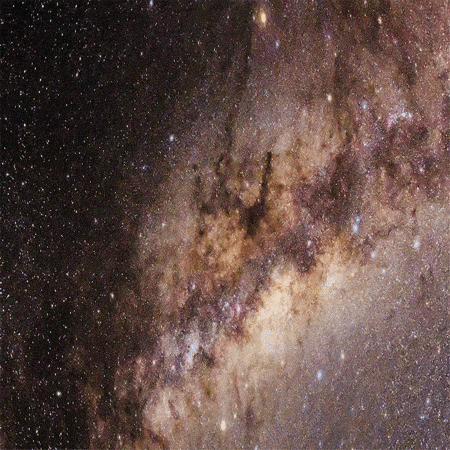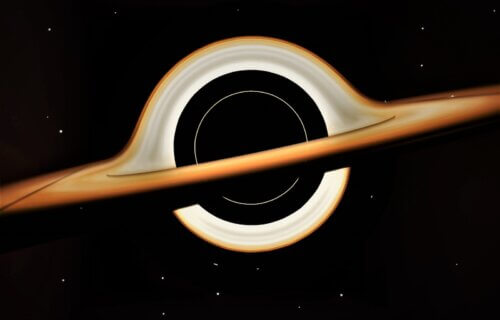BALTIMORE — Intergalactic appearances can be deceiving. It may look like a black hole, and even bend light like a black hole, but scientists say this “copycat black hole” may actually be an entirely new variety of star. While this mysterious black hole pretender is a hypothetical mathematical construction, new simulations put together by Johns Hopkins researchers suggest there may be other celestial bodies in space hiding from the best telescopes on Earth.
“We were very surprised,” says Pierre Heidmann, a Johns Hopkins University physicist who led the study, in a media release. “The object looks identical to a black hole, but there’s light coming out from its dark spot.”
The initial detection of gravitational waves in 2015 rocked the world of astrophysics, confirming the existence of black holes. Inspired by that discovery, study co-author and Johns Hopkins physicist Ibrahima Bah explains the research team set out to see if there are possibly any other objects capable of producing similar gravitational effects that could “pass as” black holes when seen using ultra-precise sensors on Earth.
“How would you tell when you don’t have a black hole? We don’t have a good way to test that,” Prof. Bah adds. “Studying hypothetical objects like topological solitons will help us figure that out as well.”
These copycats look completely different up close
These new simulations realistically depict an object the Johns Hopkins team refers to as a topological soliton. More specifically, the simulations depict an object that looks like a blurry photo of a black hole from afar but like something else entirely up close.
Again, this object is hypothetical at this stage. However, the fact that researchers were able to construct it using mathematical equations and show what it looks like in these simulations indicates there may be other celestial bodies out there in space hiding from even the best telescopes known to mankind.

Researchers add this work highlights how the topological soliton distorts space exactly as a black hole does – yet also behaves in a way totally unlike a black hole as it scrambles and releases weak light rays that wouldn’t be able to escape the strong gravitational force of a true black hole.
“Light is strongly bent, but instead of being absorbed like it would in a black hole, it scatters in funky motions until at one point it comes back to you in a chaotic manner,” Dr. Heidmann notes. “You don’t see a dark spot. You see a lot of blur, which means light is orbiting like crazy around this weird object.”
A real black hole’s gravitational field is so intense that light can only orbit around it at a certain distance from its center, in the same way that Earth orbits the Sun. That distance dictates the edge of the black hole’s “shadow,” where any incoming light will fatally hit the region that scientists refer to as the event horizon. There, nothing escapes — not even light.
How did scientists come up with this new star?
The team at Johns Hopkins simulated numerous scenarios using pictures of outer space as if they came from a camera. Researchers achieved this by placing a black hole and the topological soliton in front of the lens. The ensuing results produced distorted pictures due to the gravitational effects of the massive bodies.
“These are the first simulations of astrophysically relevant string theory objects, since we can actually characterize the differences between a topological soliton and a black hole as if an observer was seeing them in the sky,” Dr. Heidmann explains.
Motivated by various results from string theory, Bah and Heidmann collaborated to discover ways of constructing topological solitons via Einstein’s theory of general relativity in 2021. While these solitons are not predictions of new objects, they do serve as the best models available right now depicting what new quantum gravity objects could look like in comparison to black holes.
Scientists have previously created models of boson stars, gravastars, and other hypothetical objects that could exert similar gravitational effects with exotic forms of matter. However, this latest work accounts for additional pillar theories of the inner workings of the universe that those other models do not. String theory helped to reconcile quantum mechanics and Einstein’s theory of gravity, study authors explain.
“It’s the start of a wonderful research program,” Prof. Bah concludes. “We hope in the future to be able to genuinely propose new types of ultracompact stars consisting of new kinds of matter from quantum gravity.”
The study is published in Physical Review D.

